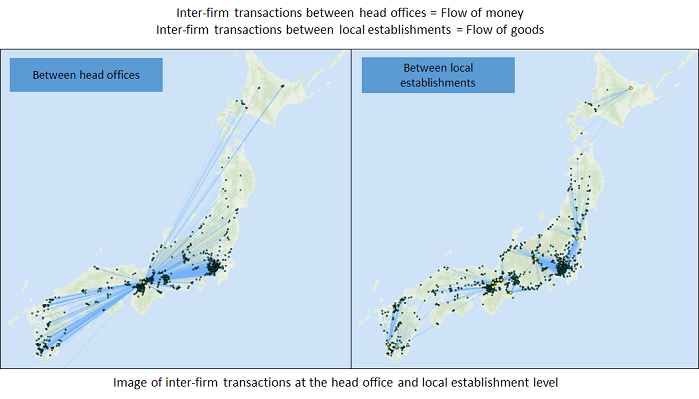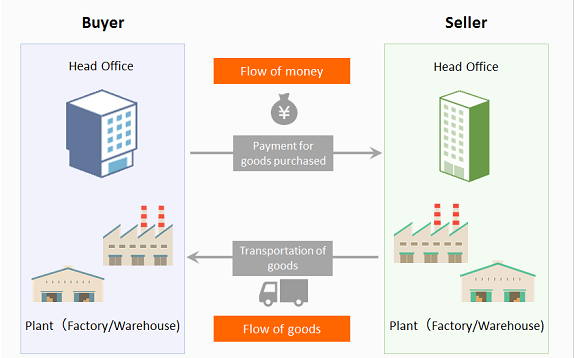Building a greater understanding of inter-firm transactions at the local establishment level
2017.8
Building a solid understanding of Japan’s inter-firm trading relationship is one of the key projects undertaken by Teikoku Databank, using its microdata of inter-firm transactions. In compiling the corporate credit reports (CCR), Teikoku Databank has been collecting information on a company’s trading partners. The information collected is for the company as a whole, including all local establishments. Given this, the inter-firm network analysis to-date has been from the perspective of the corporate headquarters transactions with its trading partners. Although, the analysis of inter-firm transactions at the corporate headquarter level gives us a good understanding of the flow of money between corporate entities it does not capture the flow of goods. Since goods are often manufactured in factories located in places different from the headquarters and are transported to factories and warehouses of business partners, as in the diagram below. In order to get a better understanding of the trading relationship in the local economy Teikoku Databank has entered into a joint collaborative research with Tsukuba University.

Local business are the drivers of the local economy
The interest in getting a better understanding of inter-firm transactions at the local establishment level is motivated by the need to better understand the local economy. Local business establishments are the drivers of the local economy. When a factory that is part of a bigger enterprise group closes its operations in a local area, if there is a good understanding of their trading relationship, it is possible to evaluate the likely impact on other local businesses and the local economy in terms of lost transactions and employment. This, in turn, paves the way for appropriate policy and countermeasures.
Initial estimates of inter-firm transactions at the local establishment level
Using annual data from 2009-2016, preliminary estimates suggest there are approximately 3.5 million transactions between local business establishments each year. A large proportion of businesses do not have additional establishments other than the head office, in these cases, the business is considered to be trading both goods and money. In fact, 65.9% of business transactions are between standalone companies. Given this, the allocation of inter-firm transactions to the local establishment level is only needed for the remaining 34.1% of all inter-firm transactions.

The estimation of inter-firm transactions at the local establishments level is based on the hypothesis that inter-firm transactions are conducted between business establishments that are close to each other, in order to reduce transaction costs such as transportation expenses associated with transactions. This is consistent with the academic literature and Ministry of Economy, Trade and Industry’s survey on industrial location. This was also verified from the information collected during the field visits by Teikoku Databank surveyors. Out of a sample 816 records that had more detailed information on the exact location of trading partners, 699 of the records (or 85.7% of the records) showed that the company was transacting with the nearest business establishment.
Therefore, by combining inter-firm transaction data held by Teikoku Databank with the location information of business offices of each company, we estimated regional business relationships between business establishments.
Future plans
The construction of inter-firm transactions at the local establishment level provides valuable insights into the functioning of the local economy. In addition to the flow of money, new insights can be obtained on the flow of goods and logistics services in the local regions. National and local government officials can use the data to better target firms for hearings and support programs. Given the considerable interest in the data, preliminary estimates have been made available in RESAS (Regional Economic Analysis System). We are hoping to make further contributions to society through our collaborative research.
University of Tsukuba, Tsutsumi Morito Laboratory
TDB Advanced Data Solutions Division, Yasuaki Kikukawa